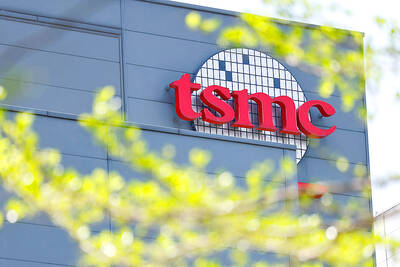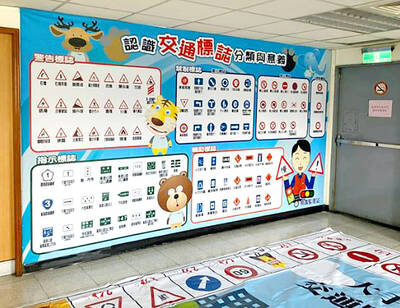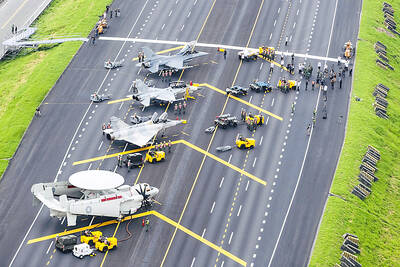US commanders in Iraq have told Washington that many civilian casualties could be avoided by using a new nonlethal weapon developed over the past decade, internal military correspondence obtained by The Associated Press shows.
Military leaders repeatedly and urgently requested the device. It uses energy beams instead of bullets and lets soldiers break up unruly crowds without firing a shot.
It is a ray gun that neither kills nor maims, but the Pentagon has refused to deploy it because of the possibility that the weapon might be seen as a torture device.
Perched on a Humvee or a flatbed truck, the Active Denial System gives people hit by the invisible beam the sense that their skin is on fire. They are supposed to move out of the way quickly and without injury.
On April 30, 2003, two days after the first violent protest in Fallujah, Gene McCall, then the top scientist at Air Force Space Command in Colorado, typed out a two-sentence e-mail to General Richard Myers, chairman of the Joint Chiefs of Staff.
"I am convinced that the tragedy at Fallujah would not have occurred if an Active Denial System had been there," McCall told Myers, according to the e-mail obtained by AP.
The system should become "an immediate priority," McCall said.
The general referred McCall's message to his staff, according to the e-mail chain.
McCall, who retired from government in November 2003, remains convinced the system would have saved lives in Iraq.
"How this has been handled is kind of a national scandal," McCall said by telephone.
A few months after McCall's message, in August 2003, Richard Natonski, a Marine Corps brigadier general who had just returned from Iraq, filed an "urgent" request with officials in Washington for the energy-beam device.
The device would minimize what Natonski described as the "CNN Effect": the instantaneous relay of images that depict US troops as aggressors.
A year later, Natonski again asked for the system, saying a compact and mobile version was "urgently needed."
Natonski, now a three-star general, is the Marine Corps' deputy commandant for plans, policies and operations. He did not respond to an interview request.
Senior officers in Iraq have continued to make the case. One request in December last year said that as US forces are drawn down, the nonlethal weapon "will provide excellent means for economy of force."
The main reason the tool has been missing in action is public perception. With memories of the 2004 Abu Ghraib prison scandal still fresh, the Pentagon is reluctant to give troops a space-age device that could be misconstrued as a torture machine.
"We want to just make sure that all the conditions are right, so when it is able to be deployed the system performs as predicted -- that there isn't any negative fallout," said Colonel Kirk Hymes, head of the Defense Department's Joint Non-Lethal Weapons Directorate.
Reviews by military lawyers concluded it is a lawful weapon under current rules governing the conflicts in Iraq and Afghanistan, according to a Nov. 15 document prepared by Marine Corps officials in western Iraq.
Private organizations remain concerned, however, because documentation that supports the testing and legal reviews is classified. There's no way to independently verify the Pentagon's claims, Stephen Goose of Human Rights Watch in Washington said.
"We think that any time you have an emerging technology that's based on novel physical principles, that this deserves the highest level of scrutiny," Goose said. "And we really haven't had that."
Another issue for the weapon is cost.
The Pentagon has spent US$62 million developing and testing the system over the past decade, a scant amount compared to other high-profile, multibillion-dollar military programs.
Still, officials say the technology is too expensive, although they will not say what it costs to build. They cite engineering challenges as another obstacle, although one US defense contractor says it has a model ready for production.
For now, there is no firm schedule for when the system might be made and delivered to troops.
Commanders in Iraq say the go-slow approach has had devastating consequences.
There is no way to calculate how many civilian deaths could have been avoided had the energy beam been available in Iraq. The bulk of the civilian casualties are due to sectarian warfare.
According to Associated Press statistics, more than 27,400 Iraqi civilians have been killed and more than 31,000 wounded in war-related violence just since the new government took office in April 2005.
The Active Denial System is a directed-energy device, although it is not a laser or a microwave. It uses a large, dish-shaped antenna and a long, V-shaped arm to send an invisible beam of waves to a target as far away as 450m.
With the unit mounted on the back of a vehicle, US troops can operate a safe distance from rocks, fire bombs and small-arms fire.
The beam penetrates the skin slightly, just enough to cause intense pain. The beam goes through clothing as well as windows, but can be blocked by thicker materials, such as metal or concrete.
The system was developed by the Air Force Research Laboratory in New Mexico. During more than 12 years of testing, only two injuries requiring medical attention have been reported; both were second-degree burns, according to the Joint Non-Lethal Weapons Directorate Web site.
Prototype units have been assembled by the military, the most promising being a larger model that sits on the back of a flatbed truck. This single unit, known as System 2, could be sent to Iraq as early as next year, according to Hymes of the Joint Non-Lethal Weapons Directorate.
Hymes' office, which nurtures promising technologies that can be used by the military branches, plans to spend US$9 million over the next two years on the effort.
Money for additional systems is not likely to be available until 2010, when an Air Force command in Massachusetts is expected to take control of the program, he said.
Recognizing the potential market, defense contractor Raytheon has invested its own money to build a version that the company calls "Silent Guardian." Although Hymes said the Raytheon product "is not ready yet," company representatives say it is.
Mike Booen, Raytheon's vice president for directed energy programs, said the company has produced one system that is available immediately.
"We have the capacity to build additional systems as needed," he said.
Raytheon has not sold any Silent Guardians to US or foreign customers, and Booen would not discuss the product's price.
US commanders in Iraq have already asked to buy Raytheon's device.

EUROPEAN TARGETS: The planned Munich center would support TSMC’s European customers to design high-performance, energy-efficient chips, an executive said Taiwan Semiconductor Manufacturing Co (TSMC, 台積電), the world’s largest contract chipmaker, yesterday said that it plans to launch a new research-and-development (R&D) center in Munich, Germany, next quarter to assist customers with chip design. TSMC Europe president Paul de Bot made the announcement during a technology symposium in Amsterdam on Tuesday, the chipmaker said. The new Munich center would be the firm’s first chip designing center in Europe, it said. The chipmaker has set up a major R&D center at its base of operations in Hsinchu and plans to create a new one in the US to provide services for major US customers,

The Ministry of Transportation and Communications yesterday said that it would redesign the written portion of the driver’s license exam to make it more rigorous. “We hope that the exam can assess drivers’ understanding of traffic rules, particularly those who take the driver’s license test for the first time. In the past, drivers only needed to cram a book of test questions to pass the written exam,” Minister of Transportation and Communications Chen Shih-kai (陳世凱) told a news conference at the Taoyuan Motor Vehicle Office. “In the future, they would not be able to pass the test unless they study traffic regulations

‘A SURVIVAL QUESTION’: US officials have been urging the opposition KMT and TPP not to block defense spending, especially the special defense budget, an official said The US plans to ramp up weapons sales to Taiwan to a level exceeding US President Donald Trump’s first term as part of an effort to deter China as it intensifies military pressure on the nation, two US officials said on condition of anonymity. If US arms sales do accelerate, it could ease worries about the extent of Trump’s commitment to Taiwan. It would also add new friction to the tense US-China relationship. The officials said they expect US approvals for weapons sales to Taiwan over the next four years to surpass those in Trump’s first term, with one of them saying

‘COMING MENACINGLY’: The CDC advised wearing a mask when visiting hospitals or long-term care centers, on public transportation and in crowded indoor venues Hospital visits for COVID-19 last week increased by 113 percent to 41,402, the Centers for Disease Control (CDC) said yesterday, as it encouraged people to wear a mask in three public settings to prevent infection. CDC Epidemic Intelligence Center Deputy Director Lee Chia-lin (李佳琳) said weekly hospital visits for COVID-19 have been increasing for seven consecutive weeks, and 102 severe COVID-19 cases and 19 deaths were confirmed last week, both the highest weekly numbers this year. CDC physician Lee Tsung-han (李宗翰) said the youngest person hospitalized due to the disease this year was reported last week, a one-month-old baby, who does not